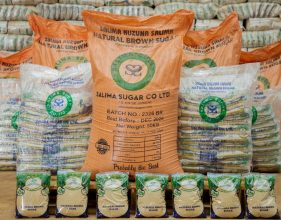Kayekekera closure to hamper growth

Malawi’s growth prospects for the year 2014 will likely be revised downwards following the suspension of production at Malawi’s biggest uranium mining investment in Karonga, experts have warned.
The experts, namely Blantyre-based Nico Asset Managers Limited and Alliance Capital Limited, have separately predicted that the shutdown in uranium mining may also drag down Malawi’s exports growth which significantly contributes to an economy’s real Gross Domestic Product (GDP) growth rate.
On February 7 2014, Paladin Energy Limited announced the suspension of production at Kayelekera mine and said the suspension will involve placing the operation on care and maintenance until the price of uranium recovers on the international market.
“Mining contributes about 10 percent of the GDP and Kayelekera is a huge portion of mining industry in Malawi this means that all things being equal, the growth prospects of this country may be revised,” said Alliance Capital in its latest commentary.
Prior to Malawi’s first commercial mining venture at Kayelekera, the mining sector contributed around three percent of GDP.
On its part, Nico Asset Managers also indicates in its January 2014 economic report that the shutdown of the Kayelekera mine may drag growth as its exports significantly contribute towards GDP growth.
“However, the shutdown of Kayelekera mine might increase the current account deficit if it is closed for a long time as uranium accounts for 10 percent of total exports but tobacco export growth will prevent a worsening shortfall,” it says.
The portfolio investment and management firm also observes that other risks to economic growth is the alleged corruption in the public sector as well as the intermittent which it says may damage productivity in the short term.
Overall, the firm says economic growth in 2014 will be hinged on the recovery in aid, the expansion of agricultural subsidies and improved investor sentiment as well as innovations in the mining sector.
It projects a robust export growth between 2015 and 2017, under- pinned by favorable tobacco prices and government efforts to pro mote production of cotton and other agricultural commodities.
Last year, the economy was earlier expected to grow by 5.5 percent by IMF but was later revised to 5 percent based on the fund’s survey results as well as revised crop estimates.
In 2012, Malawi’s real GDP growth rate was earlier projected at 4.3 percent but a slump in agriculture emanating from a weather-related decline in maize production and a halving of the tobacco crop prompted authorities to revise the growth rate downwards to 1.8 percent towards the end of the year.





